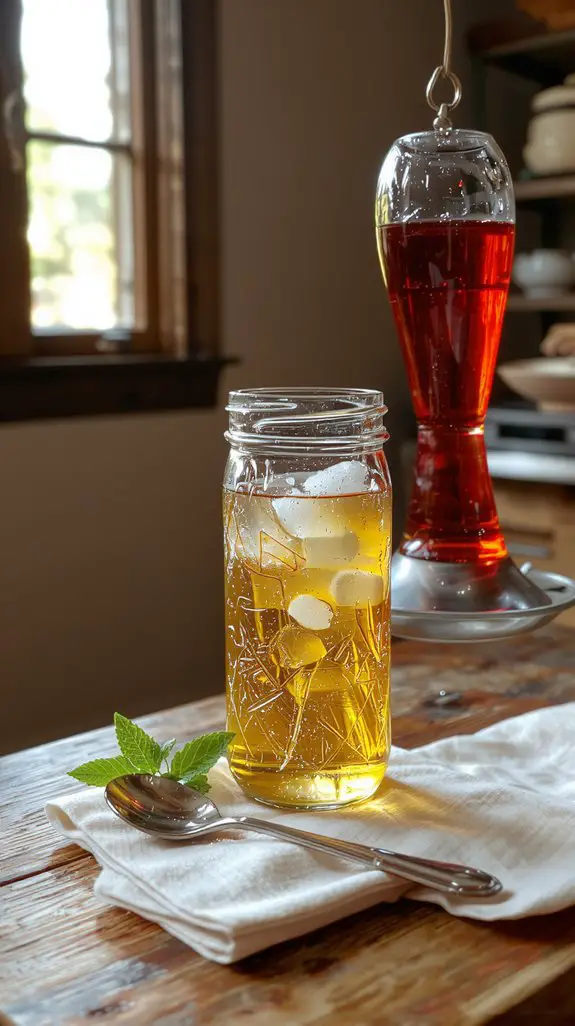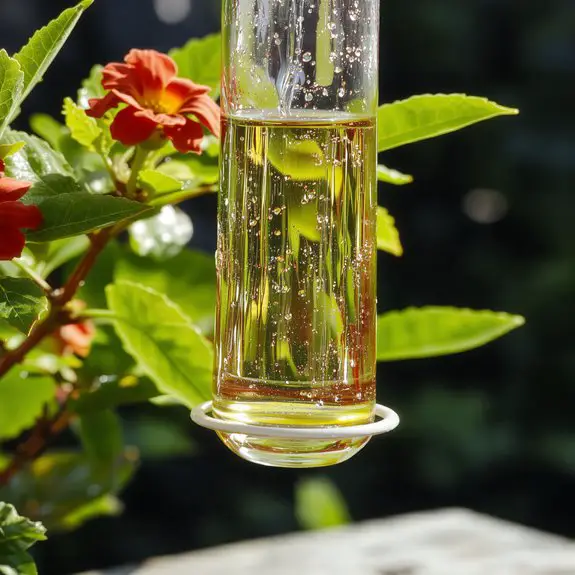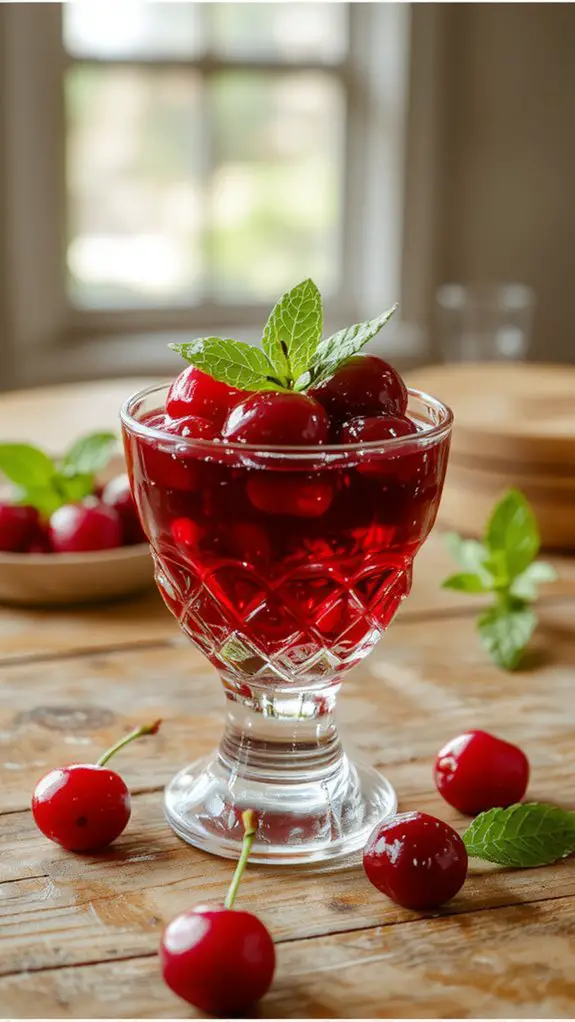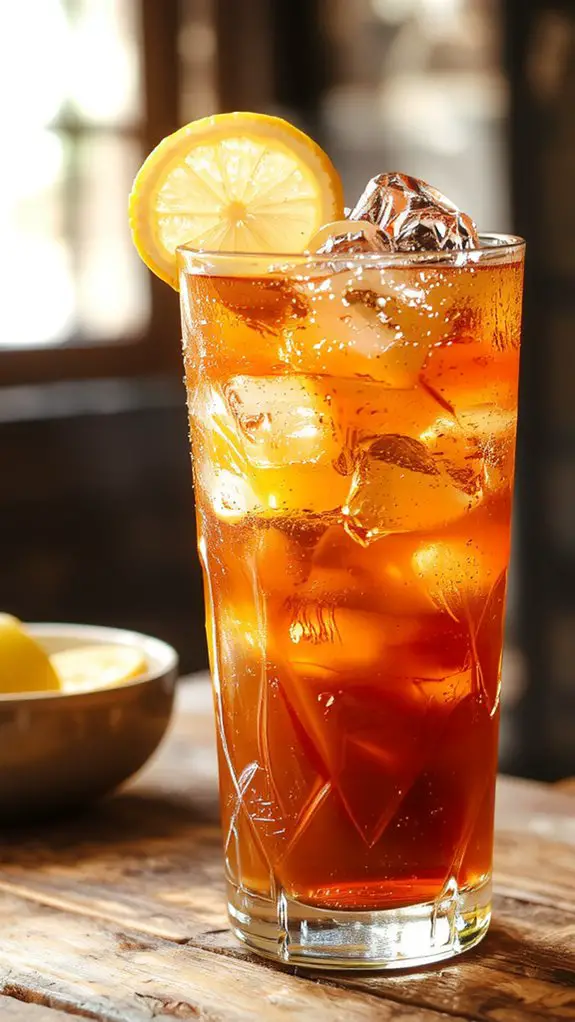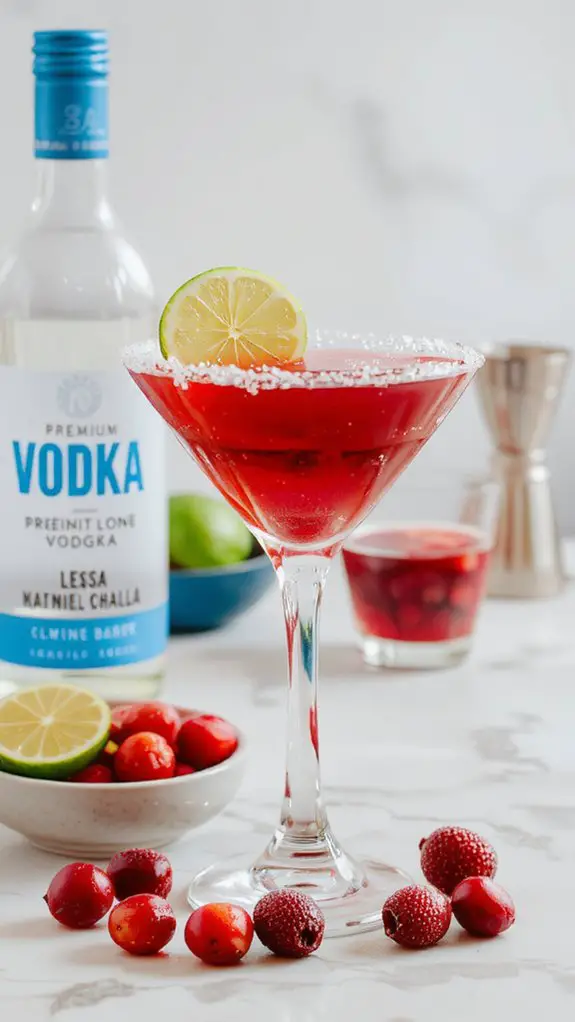Recipe
This homemade hummingbird food recipe is the *only* one you’ll ever need—it’s foolproof, quick, and guaranteed to bring those tiny, fluttering visitors to your yard in no time. Forget the store-bought stuff with its questionable additives; this simple mix of just two ingredients isn’t only safer for hummingbirds but also fresher and more natural.
I’ve been using this recipe for years, and I can tell you—it’s a total game-changer for attracting these magical little creatures to your garden. The sweet nectar mimics their natural food source, and the best part? You probably already have everything you need in your kitchen.
Let’s whip up something that’s as delightful for them as it’s satisfying for you to watch them enjoy. Trust me, once you try this, you’ll never go back!
Ingredients
Creating homemade hummingbird food is simpler than you might think, and using the right ingredients guarantees these tiny visitors stay healthy and keep coming back. Avoid using red dye or artificial sweeteners—hummingbirds don’t need them, and they can be harmful. Stick to pure, natural ingredients for a feeder mix that’s safe and irresistible.
Here’s what you’ll need:
- Granulated White Sugar: This is the star of the show and mimics the natural nectar hummingbirds love. *Pro Tip: Use refined white sugar—it dissolves easily and lacks additives that can harm birds.*
- Water: Opt for filtered or distilled water to avoid impurities. *Substitution: Tap water works if boiled and cooled to remove chlorine.*
- Optional: Red Feeder: While sugar water is colorless, hummingbirds are drawn to red feeders. Skip the red dye—it’s unnecessary and potentially harmful.
How to Make the Best Essential Sugar-Water Ratio

- Mix sugar and water: Combine 1 part white granulated sugar with 4 parts water in a clean pot. The 1:4 ratio is essential—it mimics the natural nectar concentration hummingbirds prefer and guarantees their safety.
- Heat the mixture: Place the pot on the stove and gently heat the sugar-water mixture, stirring occasionally, until the sugar fully dissolves.
Avoid boiling or overheating, as this can alter the solution’s consistency and harm the birds.
– Cool completely: Remove the pot from heat and let the mixture cool to room temperature.
This prevents harm to hummingbirds and avoids damaging the feeder’s materials.
– Fill the feeder: Once cool, pour the sugar-water solution into a clean, sterilized hummingbird feeder.
Avoid filling it to the brim to prevent spillage.
– Store extras: Any leftover solution can be stored in a sealed container in the refrigerator for up to one week.
Always let it reach room temperature before refilling the feeder.
- Clean regularly: Clean the feeder thoroughly every 2-3 days, especially in warm weather, to prevent mold and bacteria growth, which can harm hummingbirds.
- Avoid additives: Never use red dye, honey, or artificial sweeteners.
These ingredients are harmful and unnecessary. The feeder’s red parts are enough to attract the birds.
– Monitor closely: Watch for signs of spoilage or reduced activity.
If the solution becomes cloudy or hummingbirds stop visiting, discard it immediately and clean the feeder.
Nutrition
This homemade hummingbird food recipe is a simple and nutritious solution for feeding hummingbirds. It provides essential energy for these tiny birds without any harmful additives.
| Nutrient | Amount per Serving (1 cup) |
|---|---|
| Calories | 60 kcal |
| Carbohydrates | 15 g |
| Sugars | 15 g |
| Sodium | 0 mg |
| Potassium | 0 mg |
| Protein | 0 g |
| Fat | 0 g |
Chef Tips
When preparing homemade hummingbird food, I’ve found that simplicity is key. Always use a 1:4 sugar-to-water ratio—never add food coloring or artificial sweeteners. Boil the water first to dissolve the sugar completely, then let it cool before filling feeders.
Clean feeders every 2-3 days to prevent mold and bacteria. Place feeders in shaded areas to slow spoilage, and avoid overfilling to reduce waste.
Frequently Asked Questions
Can Hummingbirds Become Dependent on Feeders?
I’ve heard hummingbirds won’t become dependent on feeders if I keep them clean and filled with fresh sugar water. They still forage naturally, but I know they’ll rely on feeders when natural food’s scarce.
How Often Should I Clean the Hummingbird Feeder?
I clean my hummingbird feeder every 2-3 days, especially in hot weather, to prevent mold and bacteria. If it’s cooler, I can stretch it to 5 days, but fresh nectar’s always better for the birds.
What Temperature Is Best for Storing Hummingbird Food?
The best temperature for storing hummingbird food is in the fridge, around 35-40°F. It’ll stay fresh for about a week there. Don’t keep it at room temperature too long; it could spoil quickly in warmer weather.
Can I Use Organic Sugar for Hummingbird Food?
Yes, I can use organic sugar for hummingbird food. It’s safe as long as it’s plain white cane sugar without additives. I’ll mix one part sugar with four parts water, just like with regular sugar.
How Do I Prevent Ants From Getting Into the Feeder?
I prevent ants by using an ant moat or guard filled with water above the feeder. If I don’t have one, I apply a thin layer of petroleum jelly on the feeder’s hanging wire to block their path.

